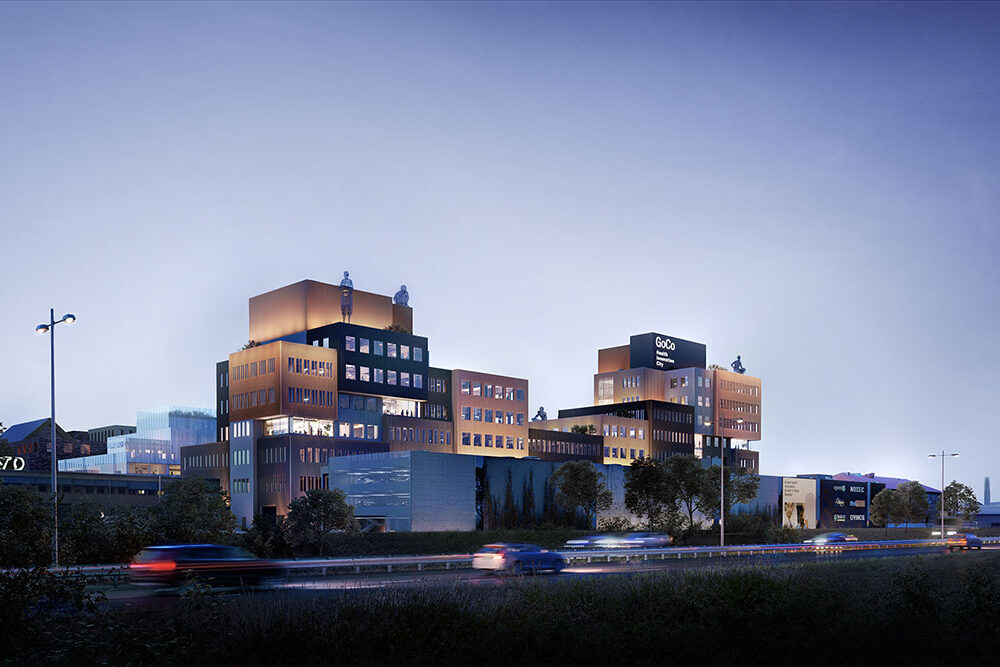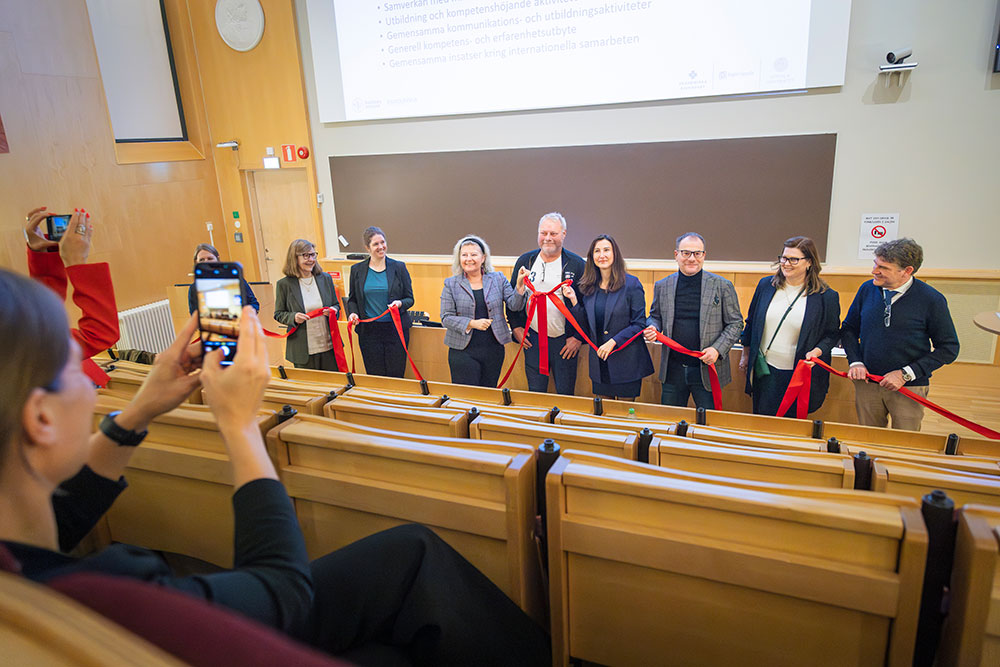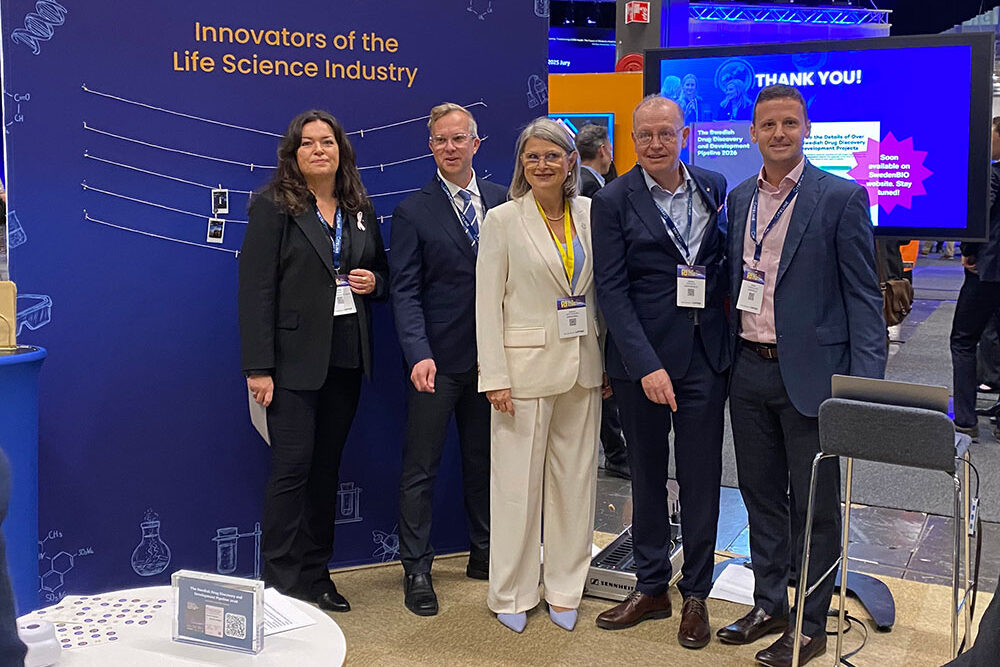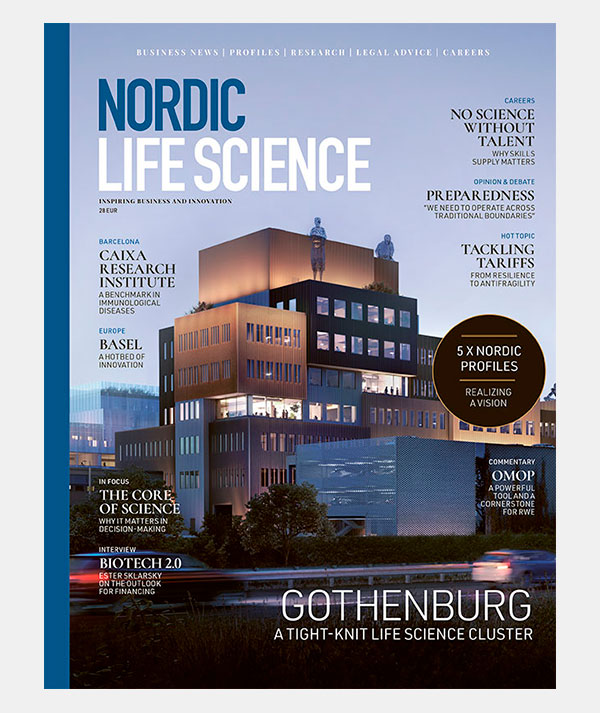Western Sweden’s tight-knit life science cluster

Gothenburg, the beating heart of Sweden’s western life science cluster, is home to some 600 life science companies and 10,000 employees in the industry. The cluster prides itself on strong ties between academia, industry, and healthcare.
Gothenburg boasts the highest concentration of natural scientists and engineers of all of Sweden’s metropolitan regions. This is according to Business Region Gothenburg, which also keeps tally on the number of companies and employees active in the industry. In total, western Sweden’s life science cluster contains about 18% of the country’s life science companies, according to the industry organization SwedenBIO.
It is the vibrant ecosystem driven by strong collaboration between academia, healthcare, and industry that makes Gothenburg such a thriving hub for life sciences in northern Europe. The city’s prominence is anchored by key organizations like AstraZeneca – one of the company’s six global research facilities is located here – and Scandinavia’s largest university hospital, Sahlgrenska University Hospital. Other significant companies include Mölnlycke Health Care and Getinge.

Innovation is fostered through initiatives like Sahlgrenska Science Park, a non-profit accelerator that connects startups, researchers, and public stakeholders. The city’s two major universities, the University of Gothenburg and Chalmers University of Technology, further strengthen the sector with cutting-edge research and by spinning out new companies.

The newly developed GoCo Health Innovation City aims to be a world-class district that attracts global talent and promotes collaborative innovation. Its signature building, GoCo House, opened in February 2023.
Life science is an important sector for western Sweden, and an opportunity for the development of our healthcare system.
The administrative Region of Västra Götaland, which Gothenburg is part of, has made life sciences a strategic priority for the development of western Sweden.

“Life science is an important sector for western Sweden, and an opportunity for the development of our healthcare system. It is therefore a top priority sector when it comes to regional investments,” says Jenny Almkvist, coordinator at the region’s Life Science Office. “It’s our task to oil the machinery and every year Region Västra Götaland invests around SEK 70 million in the life science ecosystem in western Sweden. For example, we are a co-financier of Sahlgrenska Science Park, and together with Vinnova we supported AstraZeneca’s BioVentureHub for ten years.”
From innovation to commercialization
BioVentureHub was established as an open innovation ecosystem within AstraZeneca’s premises in 2014. To date, more than 60 emerging life science companies and academic groups have moved into the hub, where they have co-located with AstraZeneca and have had access to AstraZeneca’s lab facilities and infrastructure.

“As a public–private partnership, the public funding covered half of the cost for BioVentureHub and AstraZeneca covered the other half during the first ten years. In 2024, the financial support from the government – through Region Västra Götaland and Vinnova – ended. This partnership has been very important to us, because we wouldn’t have been able to start BioVentureHub ten years ago given the uncertainty that the initiative actually meant for AstraZeneca,” says Magnus Björsne, CEO of BioVentureHub.
“In the end, AstraZeneca decided in 2023 to continue operating BioVentureHub in the same manner as before, which I think is exactly the point when you get funding to start a project like this – that it can be initiated and then continue on its own,” he adds.
About 25 companies and groups currently reside in the hub –from Sweden, Norway, the US, the UK, Switzerland, Israel, and the Netherlands. The hub has an ongoing agreement with the Norwegian Innovation Agency, aimed at lowering the threshold for Norwegian companies to join the hub – and they have a similar set-up with other countries.
We believe that BioVentureHub has an important role to play in bridging all those investments from for example Vinnova or from venture capital, so that these companies will have an opportunity to grow.
“This is an efficient way to increase international partnerships and we’re in the process of negotiating an agreement with another northern European country. These are countries that typically lack a pharmaceutical industry, but which conduct a lot of pharmaceutical research,” Björsne says.
“In Sweden we’re very good at creating innovation but we’re not very good at commercialization. We believe that BioVentureHub has an important role to play in bridging all those investments from for example Vinnova or from venture capital, so that these companies will have an opportunity to grow,” he adds.

The next big thing in health innovation
Sahlgrenska Science Park, which is dedicated to enhancing the competitiveness of Gothenburg and western Sweden’s life science sector, also proactively fosters collaboration both within and beyond the country’s borders.
“Gothenburg is not very well known internationally. We’re working to put the region on the map globally, for example through our Sahlgrenska Global Health Hackathon,” the park’s CEO Cecilia Edebo says.

The hackathon, which has attracted about 1,000 people from six countries across three continents, has been running for a year. Its grand finale is set to take place at the Nordic Life Science Days conference, which opens its doors – for the first time ever in Gothenburg – on October 13-14. “We had a dream to do something with our international partners globally. Through the hackathon we’ve seen 75 new innovations spring up, and who knows – maybe one of them will be the next big thing in health innovation,” says Edebo.
While looking abroad and strengthening Gothenburg’s ties with the world, Cecilia Edebo is also conscious that some restraints in the local ecosystem cause promising companies to up and leave.
One of the main challenges is that we don’t have access to enough test beds in Sweden in general – that often results in companies moving abroad.
“We have supported the establishment of several successful companies, but they tend to move out of Sweden, ‘get exported’ and then we’ve lost the opportunity for economic growth. One of the main challenges is that we don’t have access to enough test beds in Sweden in general – that often results in companies moving abroad,” she says.
Rewarding collaboration
One of the companies supported by CO-AX, Sahlgrenska Science Park’s accelerator, is Anyo Labs, a startup founded in 2022 that develops AI tools for drug discovery.
“Right from the start we realized that there are a lot of different infrastructures and incubators around. At CO-AX we were looking for contacts in the industry and to see where the drugs actually make a difference, which is in the hospital,” says Anyo Labs’ CEO Albin Boman.
Right from the start we realized that there are a lot of different infrastructures and incubators around.
The strong environment for collaboration between academia, industry, and the hospital sector has proven beneficial for the young tech company, as Anyo Labs have established a rewarding collaborative project.

“We’re collaborating with a surgeon from the university hospital, who is running research in his specific disease area. We got to know him by just being here and realized that we can help him speed up his research, and now we’re running a research project together,” explains Boman. “As a medical doctor, he knows the patients and once we’ve developed a potential treatment together it will be very close to the patients already, which is a huge benefit.”
Access to physical infrastructure
Atley Solutions, founded in 2019, is another home-grown Gothenburg company that is specialized in automated manufacturing and services for radiopharmaceuticals. The IP that Atley Solutions is based on was developed at the University of Gothenburg and later on received funding from Chalmers Ventures.
“There are a couple of things that I think are really important for any startup to have in place in your local area – for example strong academic institutions that will generate new exciting IP and exciting new products that need real-world applications. But often the issue is that in academia, that’s where it stops, you publish a paper, but the real-world application is sometimes not the focus,” says co-founder and CEO, Milton Lönnroth.
A key part in being able to develop this type of technology is access to physical infrastructure that exists here in Gothenburg already, because of the research taking place at the academic institutions.
“What I think has been really good – and where groups like Chalmers Ventures have played a really big role – is making sure that this exciting, valuable academic research is actually transferred into real-world solutions. That’s been really important for us, to be able to access those kinds of ecosystem players to support us on our journey,” he says.

When reflecting on the importance of Gothenburg’s life science ecosystem to the development of this company, Lönnroth says:
“Specifically for us at Atley, a key part in being able to develop this type of technology is access to physical infrastructure that exists here in Gothenburg already, because of the research taking place at the academic institutions.”
“Through collaboration with these institutions we’ve been able to access infrastructure that otherwise would have been prohibitively expensive for us as a small company to develop. That would have made Atley a non-starter from the beginning,” he concludes.

Updated: October 11, 2025, 12:31 pm
Published: October 1, 2025











